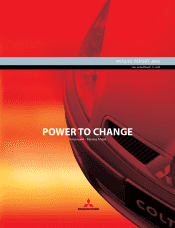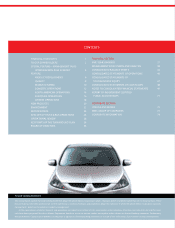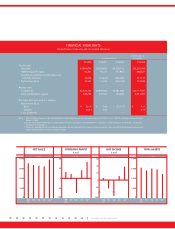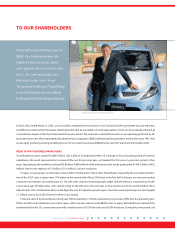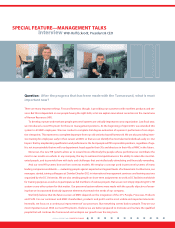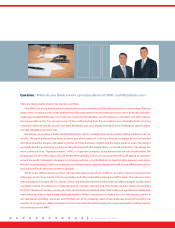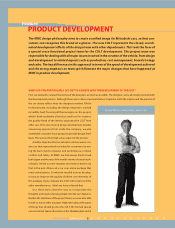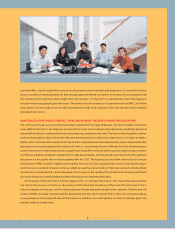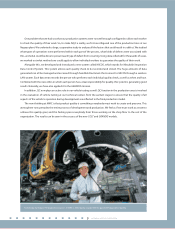Mitsubishi 2003 Annual Report Download - page 8
Download and view the complete annual report
Please find page 8 of the 2003 Mitsubishi annual report below. You can navigate through the pages in the report by either clicking on the pages listed below, or by using the keyword search tool below to find specific information within the annual report.
6
ANNUAL REPORT 2003 POWER TO CHANGE
Ryugo Nakao, Strategic Project Leader of COLT
ANNUAL REPORT 2003 POWER TO CHANGEANNUAL REPORT 2003 POWER TO CHANGE
Feature
PRODUCT DEVELOPMENT
6
The MMC design philosophy aims to create a unified image for Mitsubishi cars, so that con-
sumers can recognize this brand at a glance. The new COLT represents the closely coordi-
nated development efforts of the design team with other departments. This took the form of
a special cross-functional project team for the COLT development. This project team was
responsible for dealing with all major issues involved in the creation of the vehicle, from design
and development to related aspects such as production, cost management, brand strategy
and sales. The key differences in this approach in terms of the speed of development achieved
and the strong emphasis on team spirit illustrate the major changes that have happened at
MMC in product development.
WHAT DID YOU PARTICULARLY SET OUT TO ACHIEVE WITH THE DEVELOPMENT OF THE COLT?
First, we wanted to respect the wishes of the designers as much as possible. The designers were all closely involved with
the development process. Although there were a few occasional clashes of opinion, both the interior and the exterior of
the car closely reflect what the designers wanted. All the
technical team, including the design engineers, worked
incredibly hard, focusing all their energies on the project,
which I think resulted in a first-class small car. For instance,
the quality finish of the interior separates the COLT from
other cars of its class. During design development, besides
canvassing opinions from inside the company, we also
assembled consumer focus groups to provide design feed-
back. This was another high-value aspect of the process.
Another objective that we set out to achieve was to cre-
ate a car that represented real value for consumers, by rais-
ing the bar in terms of power and performance, internal
comfort and safety. At MMC, we had always tried to lead
both Japan and the rest of the world in terms of certain tech-
nologies. I think in some respects we tried too hard to do
that in the past. Above all, a car is an entire package that
must evoke balance. So what we needed to do as develop-
ers was to improve the quality of all the core elements of
this package. If you compare the COLT with small cars from
other manufacturers, I think we have achieved that.
Our third main objective was to incorporate the
thoughts and needs of young people into the car’s features.
Besides the members of the project team, we were also able
to talk to many other younger employees about the types
of things that should go into the COLT. We formed special
car assessment teams of women at the Okazaki plant and at

